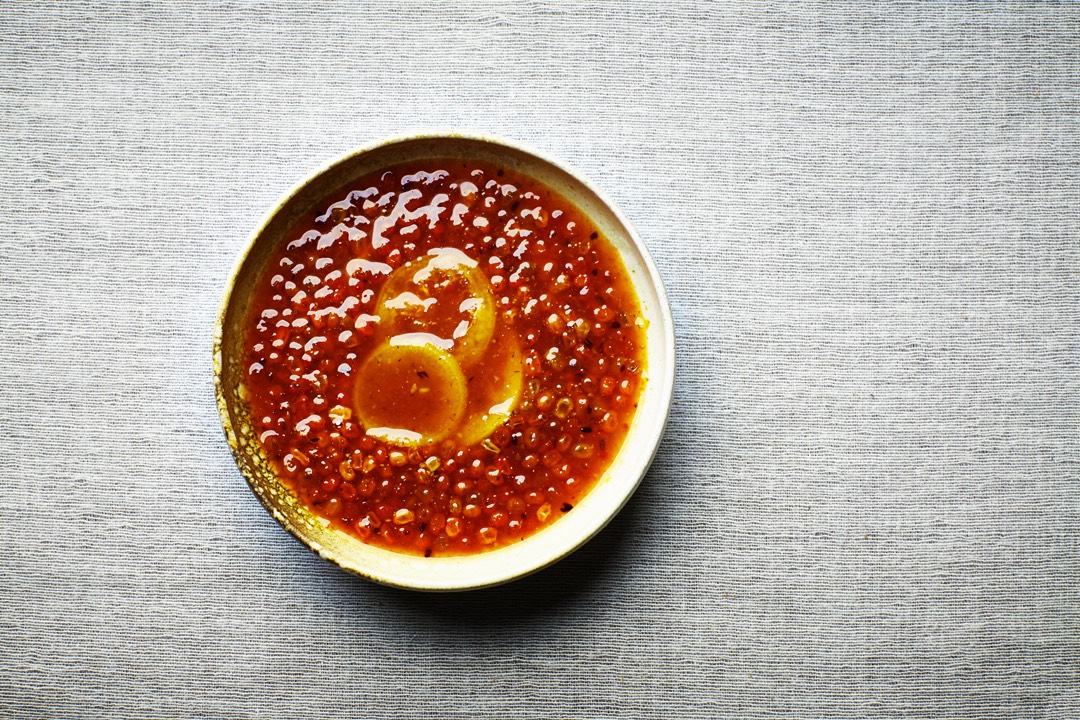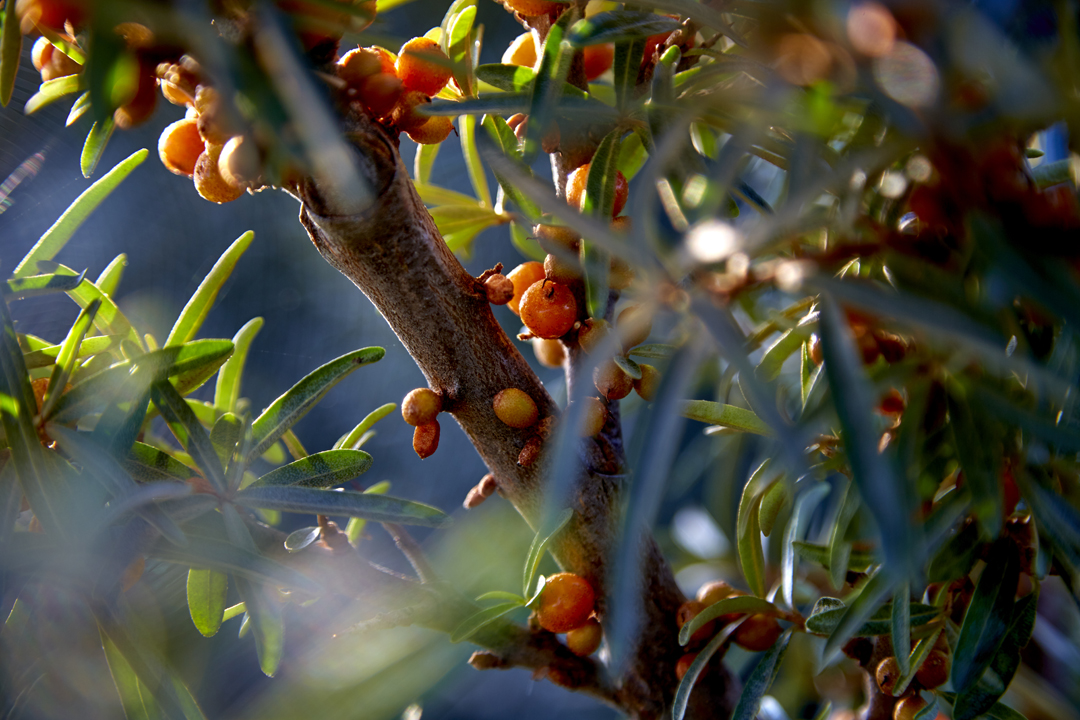
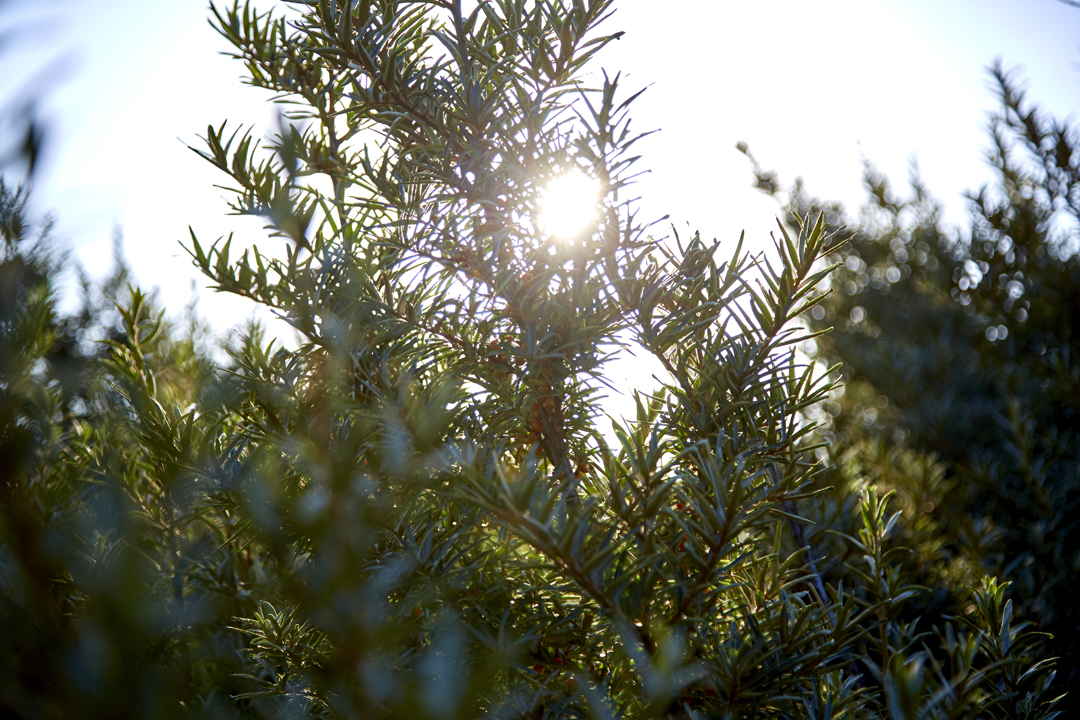
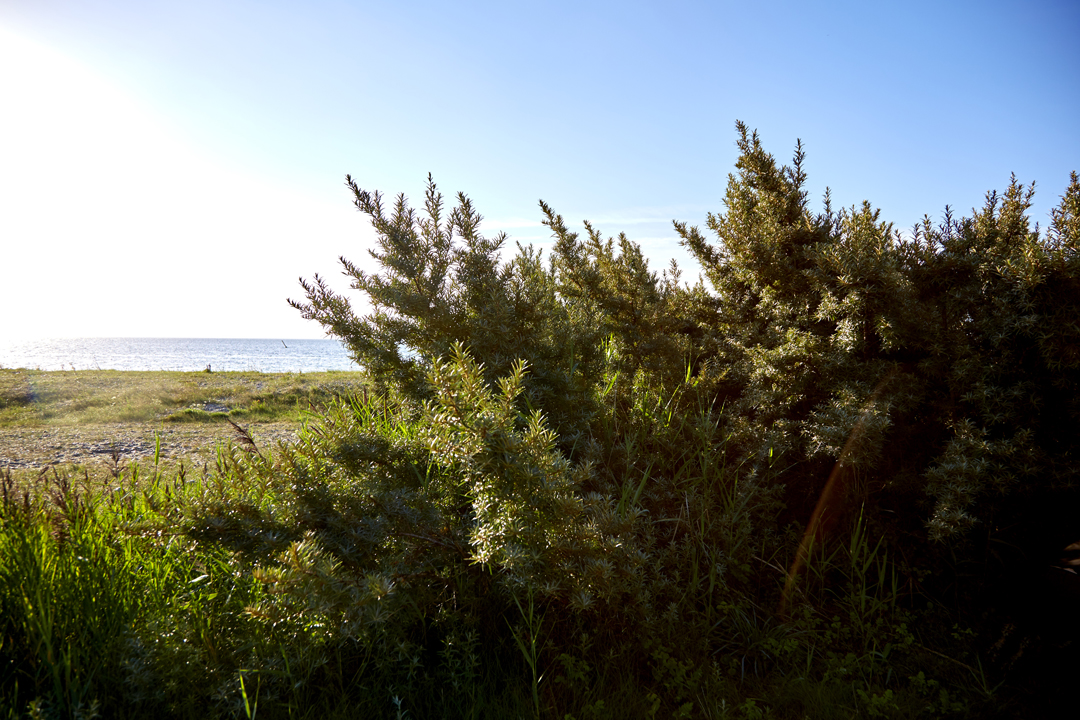
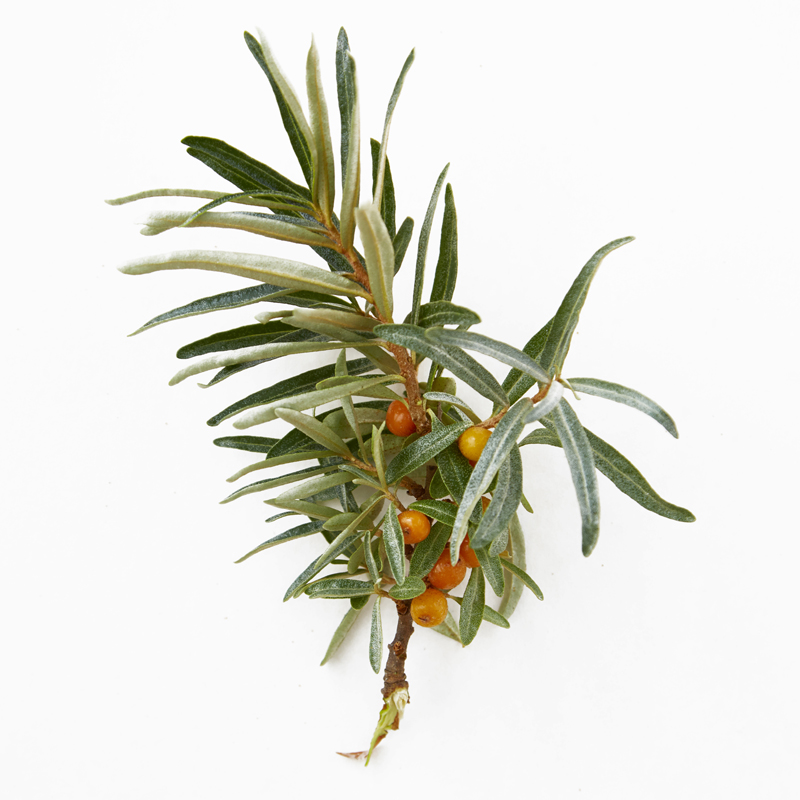
Sea buckthorn
A single berry from the sea buckthorn contains more vitamin C than a whole orange, but that's far from the best reason to bring it into your kitchen. Sea buckthorn is easy to find and full of flavor, and it can deliver a vibrant jolt of acidity to your dishes.
-
Where to Find It
Sea buckthorn simply can't get enough light, and when the sun is out—for example near the coast—it spreads quickly into dense shrubs of prickly thorns and orange berries. An extremely hardy plant, sea buckthorn can live in sandy soil despite strong, salty wind—which is why you'll often find it in dune landscapes where it functions as a windbreak. You can also find sea buckthorns in old gravel pits and on exposed slopes. If the sun is out, sea buckthorn will find a way.
Salt marshes, towns, hedges.
-
When to Find it
You can pick sea buckthorns from August until October, though the season may end earlier if it's a hot summer.
Berries: August, September, October.
-
How to Spot It
Sea buckthorn can creep along the ground in a short, bushy thicket, or, if conditions are right, it can grow vertically into a tree five to six meters tall. Its leaves are narrow and silvery. Well into fall, sea buckthorn is lush with berries that vary in color from light yellow to dark orange, and grow so densely that they look like corncobs. Once the berries turn more yellow toward the end of the season, they're close to being overripe.
-
How to Pick It
You'll be lucky if you find sea buckthorn in the perfect state of ripeness, where the small orange berries can be plucked from the plant without turning to mush in your fingers. One option is to lay a cloth underneath the bush and shake the branches until the berries begin to fall off, while avoiding cuts and scrapes from the sharp thorns. If that doesn't work, try cutting off a branch, putting it in the freezer, and later picking the frozen berries from it. Be careful to only cut short branches, in a quantity that you’ll actually use so the plant doesn't suffer unnecessary damage (and remember to ask for permission to clip from the bush). If you're only going to use the juice, you can also hold a cup under a branch and, wearing gloves, press the berries until the liquid runs down.
Risk of misidentifying the plant
Sea buckthorns can be confused with firethorns, which have very bitter, red berries. While sea buckthorn leaves are oblong with fine hairs underneath, the firethorn's are smooth and broader. Firethorn is not acutely toxic, but it's not suitable for eating either (for anyone other than birds, that is).


